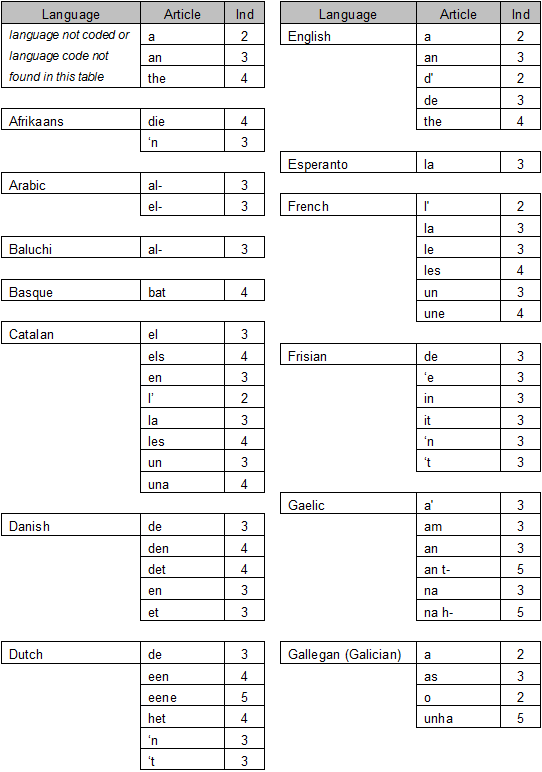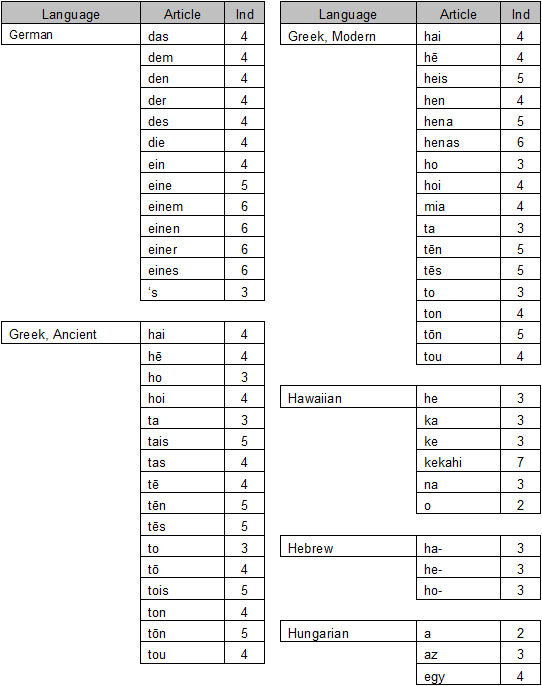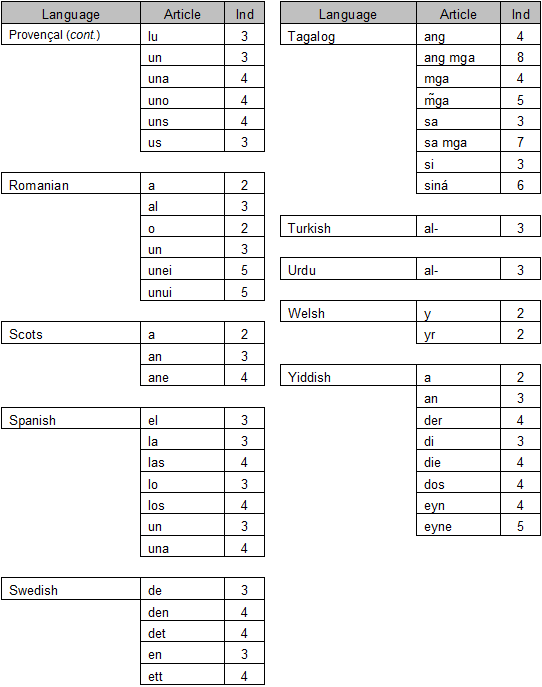Difference between revisions of "RDA 2.7"
(→RDA 2.7: Initial Articles) |
(→Corporate heading initial article check) |
||
| Line 10: | Line 10: | ||
You can choose to have corporate heading fields checked for initial articles. This MARS 2.0 option examines $t in these fields: '''110''', '''410''', '''610''', '''710''' and '''810'''. | You can choose to have corporate heading fields checked for initial articles. This MARS 2.0 option examines $t in these fields: '''110''', '''410''', '''610''', '''710''' and '''810'''. | ||
| − | If $t begins with '''The''', the initial article is deleted and the first letter of the subsequent word is capitalized. Additionally, if the first word is '''A''' or '''An''', MARS 2.0 includes it in the Possible Leading Articles Report (see [http://ac.bslw.com/community/wiki/index.php5/Profile_Guide_Chapter_5#MARS_2.0_Bib_Reports_List Step 5.2, R14]). | + | If $t begins with '''The''', the initial article is deleted and the first letter of the subsequent word is capitalized. Additionally, if the first word is '''A''' or '''An''', MARS 2.0 includes it in the Possible Leading Articles Report (see [http://ac.bslw.com/community/wiki/index.php5/Profile_Guide_Chapter_5#MARS_2.0_Bib_Reports_List AC Step 5.2, R14]). |
===245 & 440 fields=== | ===245 & 440 fields=== | ||
Revision as of 14:49, 3 April 2014
Contents
RDA 2.7: Initial Articles

MARS 2.0 supports the standard practice of omitting most initial articles even if a nonfiling character indicator has been defined for the field.
Initial articles are retained, and the filing indicator correctly set, for the 245 Title Statement and 440 Series Statement/Title Added Entry fields.
The MARS 2.0 Initial Article Table is an important part of the initial article processing routines. A copy is included at the end of this section.
Corporate heading initial article check
You can choose to have corporate heading fields checked for initial articles. This MARS 2.0 option examines $t in these fields: 110, 410, 610, 710 and 810.
If $t begins with The, the initial article is deleted and the first letter of the subsequent word is capitalized. Additionally, if the first word is A or An, MARS 2.0 includes it in the Possible Leading Articles Report (see AC Step 5.2, R14).
245 & 440 fields
MARS 2.0 checks $a for any initial article in the language of the item (as coded in fixed field 008, bytes 35-37). If an initial article is found in field 245 or 440, the 2nd indicator (Nonfiling Characters) is set to the value in the MARS 2.0 Initial Article Table.
If the field does not begin with an article in the language of the item, and the Nonfiling Characters indicator contains a number, no processing is done. This prevents setting an incorrect indicator value when a heading has been correctly coded for an initial article in a language other than that of the item as a whole.
If the 2nd indicator contains a blank (or any other character except a number), MARS 2.0 looks for the presence of an initial A, An, or The. If the heading begins with one of these three text strings, the heading is included in the Possible Leading Articles report (see Step 5.2, R14).
If no other condition is satisfied, a blank Nonfiling Characters indicator is set to zero.
MARS 2.0 initial article processing is fully compliant with the February 20, 2003 Library of Congress change in counting non-filing characters.
Diacritics associated with the initial letter of the following word are no longer included in the filing indicator:
245 05 $a Der öffentliche Dienst … 440 5 $a Los últimos alazapas ;$v 2 changes to: 245 04 $a Der öffentliche Dienst … 440 4 $a Los últimos alazapas ;$v 2
Diacritics associated with the initial article and special characters other than diacritics, however, continue to be included in the filing indicator as shown in the examples below:
245 05 $a [The Part of Pennsylvania that … townships]. 245 15 $a The “other” person …
MARS 2.0 does not examine $p.
Other Fields
MARS 2.0 examines the beginning of each instance of these fields and subfields for initial articles:
Subfield $a
| 130 | 630 | 730 | 740 | 830 |
| 210 | 211 | 212 | 214 | 222 |
| 240 | 242 | 243 | 246 | 247 |
Subfield $t
| 100 | 110 | 111 |
| 400 | 410 | 411 |
| 600 | 610 | 611 |
| 700 | 710 | 711 |
| 800 | 810 | 811 |
For fields that have a Nonfiling Characters indicator defined, the initial word is extracted based on the filing indicator and is compared with all articles in the MARS 2.0 Initial Article Table.
If the initial word is an article:
- The word is deleted
- The first letter of the subsequent word is capitalized
- The filing indicator is reset to zero
If the article is not found, MARS 2.0 includes the field in the Suspicious Filing Indicators Report for local review (see Step 5.2, R13).
MARS 2.0 uses a different process if:
- The filing indicator is a zero or a blank
- No filing indicator has been defined for the field
- The subfield being examined is $t
- If the subfield begins with The:
- The initial article is deleted
- The first letter of the subsequent word is capitalized
- The filing indicator (if defined) is reset to zero
Additionally, if the first word is A or An, it is included in the Possible Leading Articles Report (see Step 5.2, R14).
Counting Non-Filing Characters
With the advent of MARC21, the method of counting non-filing characters was clarified. On February 20, 2003 the Library of Congress implemented a change in practice for counting non-filing characters to reflect the MARC21 clarification.
This change applies when definite or indefinite articles are present and the first filing word following the article begins with a character modified by a diacritic. When an initial article is present, the rule for counting non-filing characters is as follows:
Count the article, diacritics associated with the article, any blank space, an alif, an ayn, or any mark of punctuation preceding the first filing character. Do not count a diacritic associated with the first filing character (the alif and ayn are not diacritics, they are special spacing characters not considered for filing).
This practice is best illustrated by the following examples.
Old practice: 245 13 $a L’été … 245 15 $a Los últimos … 245 05 $a Der öffentliche Dienst … 245 15 $a al-‘Alam … New practice: 245 12 $a L’été … 245 14 $a Los últimos … 245 04 $a Der öffentliche Dienst … 245 14 $a al-‘Alam …
Other helpful examples with and without initial articles (these do not reflect a change in practice):
245 04 $a al-‘Arabiyah … 245 14 $a He Mone … 245 12 $a L’enfant criminal. 245 05 $a [The Part of Pennsylvania that … townships]. 245 15 $a The “other” person … 245 10 $a [Diary] … 245 10 $a ”Full steam ahead!” …
Note: The following characters can be considered candidates as “the first filing character”:
- Latin letters
- Arabic numbers
- Super or subscript numbers
- Æ – AE digraph
- ΠРOE digraph
- Ð – Crossed d
- ð – Eth
- i – Turkish i
- L – Polish l
- l – Script l
- O – Hooked o
- U – Hooked u
- Ø – Slashed o
- Þ – Icelandic thorn
- (#) - Hash mark
- & – Ampersand
- + – Plus sign
MARS 2.0 Initial Article Table
The table shown lists each initial article, and the associated filing indicator, by language.
This table is not intended as a comprehensive list, but rather a tool that is used within a specific automated process. Generally, initial articles that cannot be correctly converted in all headings without manual review are not included in the table.
MARS 2.0 Initial Article Table

MARS 2.0 Initial Article Table

MARS 2.0 Initial Article Table

MARS 2.0 Initial Article Table

Default
| Check initial articles against table and compare to non-filing indicator values. |
links
1.0 - 2.0 - 3.0 - 4.0 - 5.0 - 6.0